Brealey, Myers. Principles of Corporate Finance. 7th edition
Подождите немного. Документ загружается.

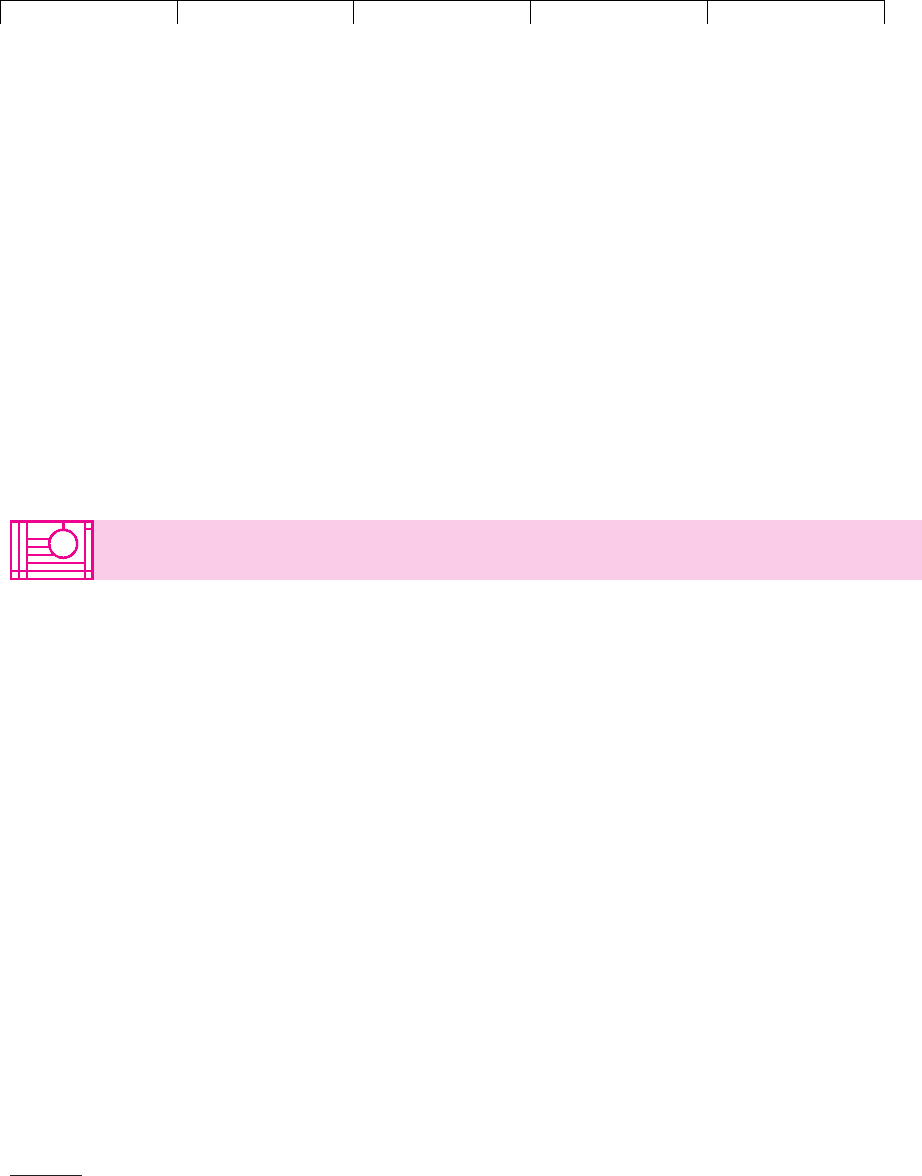
Brealey−Meyers:
Principles of Corporate
Finance, Seventh Edition
V. Dividend Policy and
Capital Structure
16. The Dividend
Controversy
© The McGraw−Hill
Companies, 2003
Stock repurchases may also be used to signal a manager’s confidence in the fu-
ture. Suppose that you, the manager, believe that your stock is substantially un-
dervalued. You announce that the company is prepared to buy back a fifth of its
stock at a price that is 20 percent above the current market price. But (you say) you
are certainly not going to sell any of your own stock at that price. Investors jump
to the obvious conclusion—you must believe that the stock is good value even at
20 percent above the current price.
When companies offer to repurchase their stock at a premium, senior manage-
ment and directors usually commit to hold onto their stock.
18
So it is not surpris-
ing that researchers have found that announcements of offers to buy back shares
above the market price have prompted a larger rise in the stock price, averaging
about 11 percent.
19
CHAPTER 16 The Dividend Controversy 441
18
Not only do managers’ hold onto their stock; on average they also add to their holdings before the an-
nouncement of a repurchase. See D. S. Lee, W. Mikkelson, and M. M. Partch, “Managers Trading around
Stock Repurchases,” Journal of Finance 47 (1992), pp. 1947–1961.
19
See R. Comment and G. Jarrell, op. cit.
20
M. H. Miller and F. Modigliani: “Dividend Policy, Growth and the Valuation of Shares,” Journal of Busi-
ness 34 (October 1961), pp. 411–433.
21
Not everybody believed dividends make shareholders better off. MM’s arguments were anticipated in
1938 in J. B. Williams, The Theory of Investment Value, Harvard University Press, Cambridge, MA, 1938.
Also, a proof very similar to MM’s was developed by J. Lintner in “Dividends, Earnings, Leverage,
Stock Prices and the Supply of Capital to Corporations,” Review of Economics and Statistics 44 (August
1962), pp. 243–269.
16.4 THE DIVIDEND CONTROVERSY
We have seen that a dividend increase indicates management’s optimism about
earnings and thus affects the stock price. But the jump in stock price that accom-
panies an unexpected dividend increase would happen eventually anyway as in-
formation about future earnings comes out through other channels. We now ask
whether the dividend decision changes the value of the stock, rather than simply
providing a signal of stock value.
One endearing feature of economics is that it can always accommodate not just
two but three opposing points of view. And so it is with the controversy about
dividend policy. On the right there is a conservative group which believes that
an increase in dividend payout increases firm value. On the left, there is a radi-
cal group which believes that an increase in payout reduces value. And in the
center there is a middle-of-the-road party which claims that dividend policy
makes no difference.
The middle-of-the-road party was founded in 1961 by Miller and Modigliani (al-
ways referred to as “MM” or “M and M”), when they published a theoretical pa-
per showing the irrelevance of dividend policy in a world without taxes, transac-
tion costs, or other market imperfections.
20
By the standards of 1961 MM were
leftist radicals, because at that time most people believed that even under idealized
assumptions increased dividends made shareholders better off.
21
But now MM’s
proof is generally accepted as correct, and the argument has shifted to whether
taxes or other market imperfections alter the situation. In the process MM have
been pushed toward the center by a new leftist party which argues for low divi-
dends. The leftists’ position is based on MM’s argument modified to take account

Brealey−Meyers:
Principles of Corporate
Finance, Seventh Edition
V. Dividend Policy and
Capital Structure
16. The Dividend
Controversy
© The McGraw−Hill
Companies, 2003
of taxes and costs of issuing securities. The conservatives are still with us, relying
on essentially the same arguments as in 1961.
Why should you care about this debate? Of course, if you help to decide your
company’s dividend payment, you will want to know how it affects value. But
there is a more general reason than that. We have up to this point assumed that the
company’s investment decision is independent of its financing policy. In that case
a good project is a good project is a good project, no matter who undertakes it or
how it is ultimately financed. If dividend policy does not affect value, that is still
true. But perhaps it does affect value. In that case the attractiveness of a new proj-
ect may depend on where the money is coming from. For example, if investors pre-
fer companies with high payouts, companies might be reluctant to take on invest-
ments financed by retained earnings.
We begin our discussion of dividend policy with a presentation of MM’s origi-
nal argument. Then we will undertake a critical appraisal of the positions of the
three parties. Perhaps we should warn you before we start that our own position
is mostly middle of the road but sometimes marginally leftist. (As investors we
prefer low dividends because we don’t like paying taxes!)
Dividend Policy Is Irrelevant in Perfect Capital Markets
In their classic 1961 article MM argued as follows: Suppose your firm has settled
on its investment program. You have worked out how much of this program can
be financed from borrowing, and you plan to meet the remaining funds re-
quirement from retained earnings. Any surplus money is to be paid out as
dividends.
Now think what happens if you want to increase the dividend payment with-
out changing the investment and borrowing policy. The extra money must come
from somewhere. If the firm fixes its borrowing, the only way it can finance the
extra dividend is to print some more shares and sell them. The new stockholders
are going to part with their money only if you can offer them shares that are
worth as much as they cost. But how can the firm do this when its assets, earn-
ings, investment opportunities, and, therefore, market value are all unchanged?
The answer is that there must be a transfer of value from the old to the new stock-
holders. The new ones get the newly printed shares, each one worth less than be-
fore the dividend change was announced, and the old ones suffer a capital loss
on their shares. The capital loss borne by the old shareholders just offsets the ex-
tra cash dividend they receive.
Figure 16.2 shows how this transfer of value occurs. Our hypothetical com-
pany pays out a third of its total value as a dividend and it raises the money to
do so by selling new shares. The capital loss suffered by the old stockholders is
represented by the reduction in the size of the burgundy boxes. But that capital
loss is exactly offset by the fact that the new money raised (the blue boxes) is paid
over to them as dividends.
Does it make any difference to the old stockholders that they receive an extra
dividend payment plus an offsetting capital loss? It might if that were the only way
they could get their hands on cash. But as long as there are efficient capital mar-
kets, they can raise the cash by selling shares. Thus the old shareholders can cash
in either by persuading the management to pay a higher dividend or by selling
some of their shares. In either case there will be a transfer of value from old to new
shareholders. The only difference is that in the former case this transfer is caused
442 PART V
Dividend Policy and Capital Structure
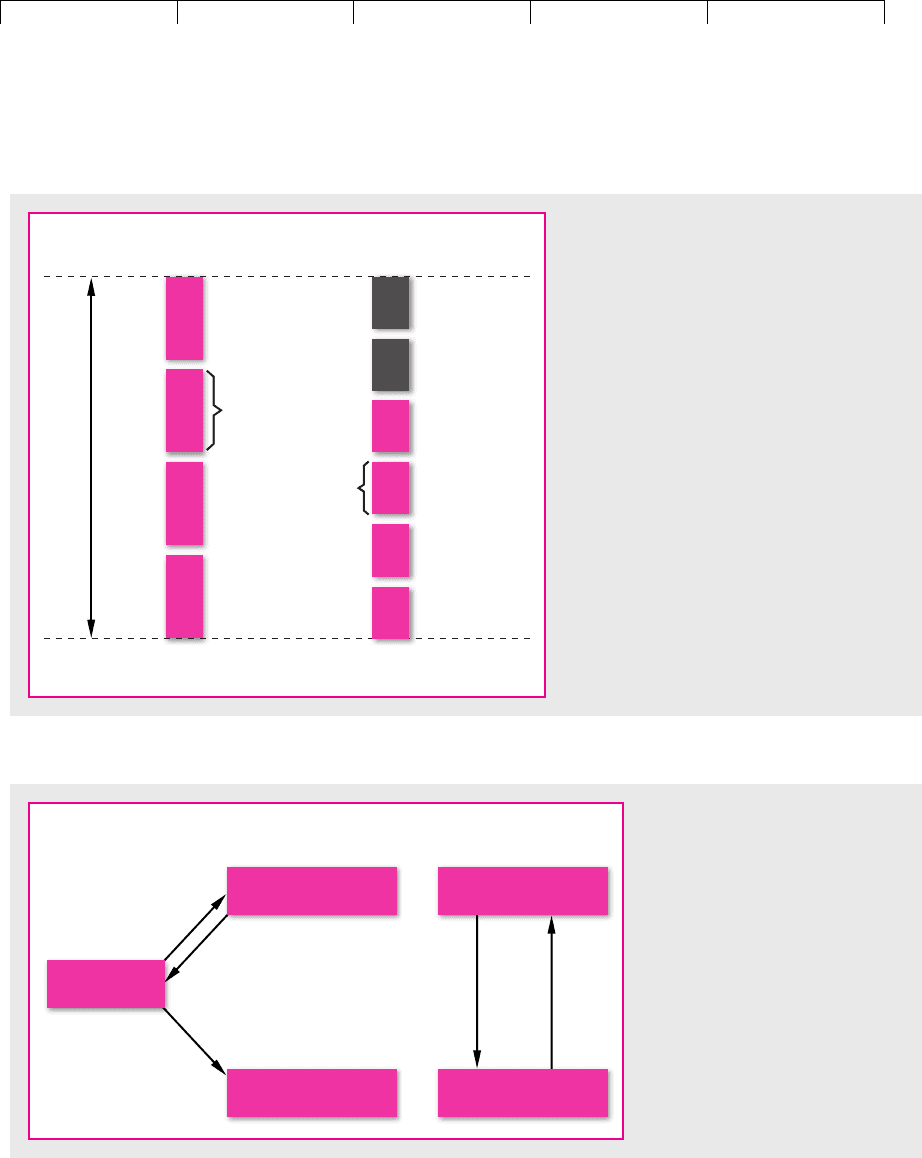
Brealey−Meyers:
Principles of Corporate
Finance, Seventh Edition
V. Dividend Policy and
Capital Structure
16. The Dividend
Controversy
© The McGraw−Hill
Companies, 2003
by a dilution in the value of each of the firm’s shares, and in the latter case it is
caused by a reduction in the number of shares held by the old shareholders. The
two alternatives are compared in Figure 16.3.
Because investors do not need dividends to get their hands on cash, they will
not pay higher prices for the shares of firms with high payouts. Therefore firms
ought not to worry about dividend policy. They should let dividends fluctuate as
a by-product of their investment and financing decisions.
CHAPTER 16
The Dividend Controversy 443
Before
dividend
Each share
worth this
before...
After
dividend
Total number
of shares
Total number
of shares
Total value of firm
... and
worth
this
after
New
stockholders
Old
stockholders
FIGURE 16.2
This firm pays out a third of its worth as a
dividend and raises the money by selling new
shares. The transfer of value to the new stock-
holders is equal to the dividend payment. The
total value of the firm is unaffected.
New stockholders
Old stockholders
Firm
New stockholders
Old stockholders
Dividend financed
by stock issue
Cash
Cash
Cash
Shares
Shares
No dividend,
no stock issue
FIGURE 16.3
Two ways of raising cash for the
firm’s original shareholders. In each
case the cash received is offset by a
decline in the value of the old
stockholders’ claim on the firm. If
the firm pays a dividend, each share
is worth less because more shares
have to be issued against the firm’s
assets. If the old stockholders sell
some of their shares, each share is
worth the same but the old stock-
holders have fewer shares.
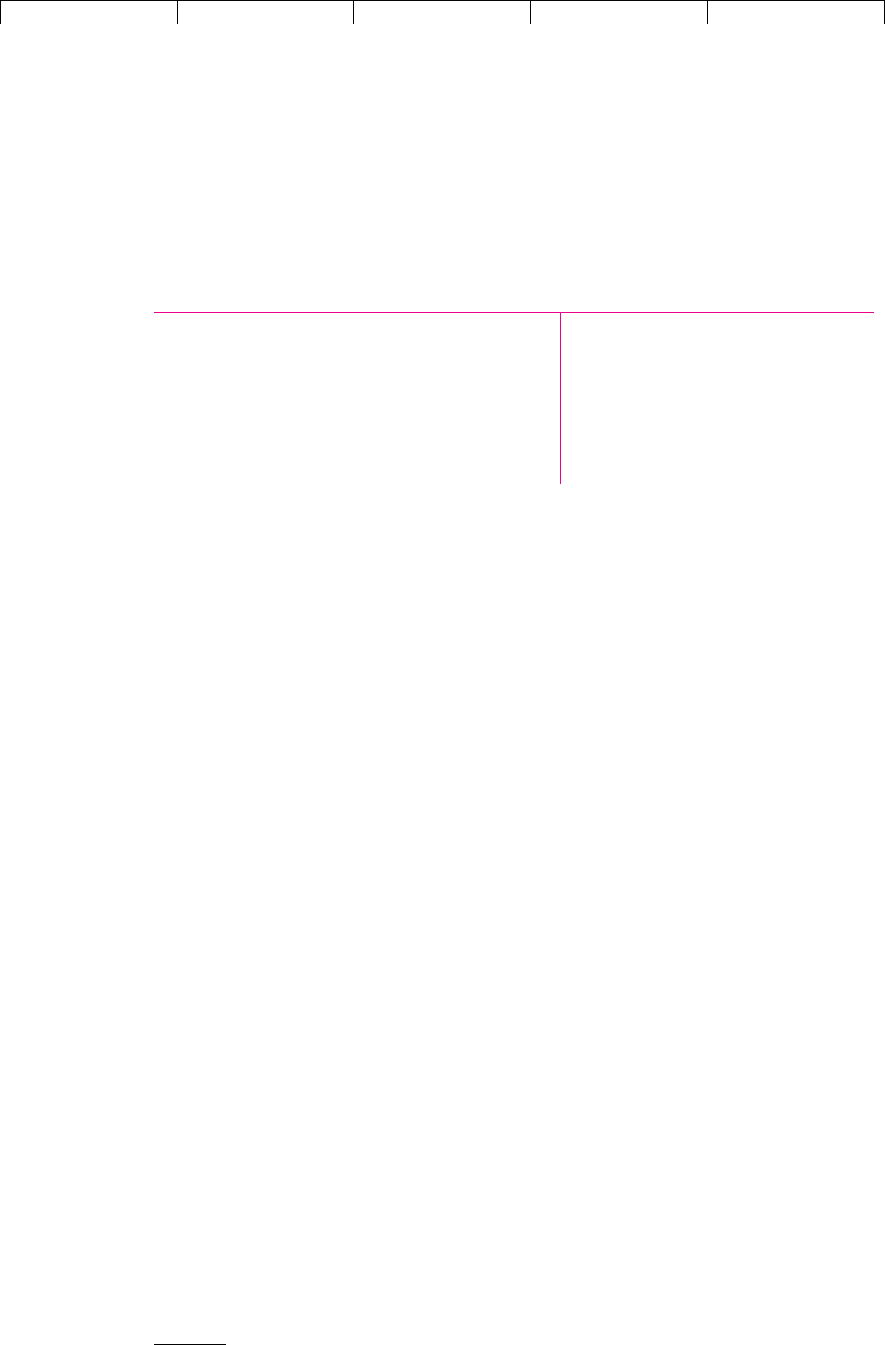
Brealey−Meyers:
Principles of Corporate
Finance, Seventh Edition
V. Dividend Policy and
Capital Structure
16. The Dividend
Controversy
© The McGraw−Hill
Companies, 2003
Dividend Irrelevance—An Illustration
Consider the case of Rational Demiconductor, which at this moment has the fol-
lowing balance sheet:
Rational Demiconductor’s Balance Sheet (Market Values)
Cash ($1,000 held for 1,000 0 Debt
investment)
Fixed assets 9,000 10,000 ⫹ NPV Equity
Investment opportunity
($1,000 investment NPV
required)
Total asset value $10,000 ⫹ NPV $10,000 ⫹ NPV Value of firm
Rational Demiconductor has $1,000 cash earmarked for a project requiring $1,000
investment. We do not know how attractive the project is, and so we enter it at
NPV; after the project is undertaken it will be worth $1,000 ⫹ NPV. Note that the
balance sheet is constructed with market values; equity equals the market value of
the firm’s outstanding shares (price per share times number of shares outstanding).
It is not necessarily equal to book net worth.
Now Rational Demiconductor uses the cash to pay a $1,000 dividend to its
stockholders. The benefit to them is obvious: $1,000 of spendable cash. It is also ob-
vious that there must be a cost. The cash is not free.
Where does the money for the dividend come from? Of course, the immediate
source of funds is Rational Demiconductor’s cash account. But this cash was ear-
marked for the investment project. Since we want to isolate the effects of dividend
policy on shareholders’ wealth, we assume that the company continues with the in-
vestment project. That means that $1,000 in cash must be raised by new financing.
This could consist of an issue of either debt or stock. Again, we just want to look at
dividend policy for now, and we defer discussion of the debt–equity choice until
Chapters 17 and 18. Thus Rational Demiconductor ends up financing the dividend
with a $1,000 stock issue.
Now we examine the balance sheet after the dividend is paid, the new stock is
sold, and the investment is undertaken. Because Rational Demiconductor’s in-
vestment and borrowing policies are unaffected by the dividend payment, its over-
all market value must be unchanged at $10,000 ⫹ NPV.
22
We know also that if the
new stockholders pay a fair price, their stock is worth $1,000. That leaves us with
only one missing number—the value of the stock held by the original stockhold-
ers. It is easy to see that this must be
Value of original stockholders’ shares ⫽ value of company ⫺ value of new shares
⫽ (10,000 ⫹ NPV) ⫺ 1,000
⫽ $9,000 ⫹ NPV
The old shareholders have received a $1,000 cash dividend and incurred a $1,000
capital loss. Dividend policy doesn’t matter.
By paying out $1,000 with one hand and taking it back with the other, Rational
Demiconductor is recycling cash. To suggest that this makes shareholders better off
is like advising a cook to cool the kitchen by leaving the refrigerator door open.
444 PART V
Dividend Policy and Capital Structure
22
All other factors that might affect Rational Demiconductor’s value are assumed constant. This is not
a necessary assumption, but it simplifies the proof of MM’s theory.

Brealey−Meyers:
Principles of Corporate
Finance, Seventh Edition
V. Dividend Policy and
Capital Structure
16. The Dividend
Controversy
© The McGraw−Hill
Companies, 2003
Of course, our proof ignores taxes, issue costs, and a variety of other complications.
We will turn to those items in a moment. The really crucial assumption in our proof
is that the new shares are sold at a fair price. The shares sold to raise $1,000 must ac-
tually be worth $1,000.
23
In other words, we have assumed efficient capital markets.
Calculating Share Price
We have assumed that Rational Demiconductor’s new shares can be sold at a fair
price, but what is that price and how many new shares are issued?
Suppose that before this dividend payout the company had 1,000 shares out-
standing and that the project had an NPV of $2,000. Then the old stock was worth
in total $10,000 ⫹ NPV ⫽ $12,000, which works out at $12,000/1,000 ⫽ $12 per
share. After the company has paid the dividend and completed the financing, this
old stock is worth $9,000 ⫹ NPV ⫽ $11,000. That works out at $11,000/1,000 ⫽ $11
per share. In other words, the price of the old stock falls by the amount of the $1
per share dividend payment.
Now let us look at the new stock. Clearly, after the issue this must sell at the
same price as the rest of the stock. In other words, it must be valued at $11. If the
new stockholders get fair value, the company must issue $1,000/$11 or 91 new
shares in order to raise the $1,000 that it needs.
Share Repurchase
We have seen that any increased cash dividend payment must be offset by a stock
issue if the firm’s investment and borrowing policies are held constant. In effect the
stockholders finance the extra dividend by selling off part of their ownership of the
firm. Consequently, the stock price falls by just enough to offset the extra dividend.
This process can also be run backward. With investment and borrowing pol-
icy given, any reduction in dividends must be balanced by a reduction in the
number of shares issued or by repurchase of previously outstanding stock. But if
the process has no effect on stockholders’ wealth when run forward, it must like-
wise have no effect when run in reverse. We will confirm this by another numer-
ical example.
Suppose that a technical discovery reveals that Rational Demiconductor’s new
project is not a positive-NPV venture but a sure loser. Management announces
that the project is to be discarded and that the $1,000 earmarked for it will be paid
out as an extra dividend of $1 per share. After the dividend payout, the balance
sheet is
CHAPTER 16
The Dividend Controversy 445
23
The “old” shareholders get all the benefit of the positive NPV project. The new shareholders require
only a fair rate of return. They are making a zero-NPV investment.
Rational Demiconductor’s Balance Sheet (Market Values)
Cash $ 0 $ 0 Debt
Existing 9,000 9,000 Equity
fixed assets
New project 0
Total asset value $ 9,000 $ 9,000 Total firm value
Since there are 1,000 shares outstanding, the stock price is $10,000/1,000 ⫽ $10 be-
fore the dividend payment and $9,000/1,000 ⫽ $9 after the payment.

Brealey−Meyers:
Principles of Corporate
Finance, Seventh Edition
V. Dividend Policy and
Capital Structure
16. The Dividend
Controversy
© The McGraw−Hill
Companies, 2003
What if Rational Demiconductor uses the $1,000 to repurchase stock instead? As
long as the company pays a fair price for the stock, the $1,000 buys $1,000/$10 ⫽
100 shares. That leaves 900 shares worth 900 ⫻ $10 ⫽ $9,000.
As expected, we find that switching from cash dividends to share repurchase
has no effect on shareholders’ wealth. They forgo a $1 cash dividend but end up
holding shares worth $10 instead of $9.
Note that when shares are repurchased the transfer of value is in favor of those
stockholders who do not sell. They forgo any cash dividend but end up owning a
larger slice of the firm. In effect they are using their share of Rational Demicon-
ductor’s $1,000 distribution to buy out some of their fellow shareholders.
Stock Repurchase and Valuation
Valuing the equity of a firm that repurchases its own stock can be confusing. Let’s
work through a simple example.
Company X has 100 shares outstanding. It earns $1,000 a year, all of which is
paid out as a dividend. The dividend per share is, therefore, $1,000/100 ⫽ $10. Sup-
pose that investors expect the dividend to be maintained indefinitely and that they
require a return of 10 percent. In this case the value of each share is PV
share
⫽
$10/.10 ⫽ $100. Since there are 100 shares outstanding, the total market value of the
equity is PV
equity
⫽ 100 ⫻ $100 ⫽ $10,000. Note that we could reach the same con-
clusion by discounting the total dividend payments to shareholders (PV
equity
⫽
$1,000/.10 ⫽ $10,000).
24
Now suppose the company announces that instead of paying a cash dividend
in year 1, it will spend the same money repurchasing its shares in the open mar-
ket. The total expected cash flows to shareholders (dividends and cash from
stock repurchase) are unchanged at $1,000. So the total value of the equity also
remains at $1,000/.10 ⫽ $10,000. This is made up of the value of the $1,000 re-
ceived from the stock repurchase in year 1 (PV
repurchase
⫽ $1,000/1.1 ⫽ $909.1)
and the value of the $1,000-a-year dividend starting in year 2 [PV
dividends
⫽
$1,000/(.10 ⫻ 1.1) ⫽ $9,091]. Each share continues to be worth $10,000/100 ⫽
$100 just as before.
Think now about those shareholders who plan to sell their stock back to the
company. They will demand a 10 percent return on their investment. So the price
at which the firm buys back shares must be 10 percent higher than today’s price,
or $110. The company spends $1,000 buying back its stock, which is sufficient to
buy $1,000/$110 ⫽ 9.09 shares.
The company starts with 100 shares, it buys back 9.09, and therefore 90.91 shares
remain outstanding. Each of these shares can look forward to a dividend stream of
$1,000/90.91 ⫽ $11 per share. So after the repurchase shareholders have 10 percent
fewer shares, but earnings and dividends per share are 10 percent higher. An in-
vestor who owns one share today that is not repurchased will receive no dividends
in year 1 but can look forward to $11 a year thereafter. The value of each share is
therefore 11/(.1 ⫻ 1.1) ⫽ $100.
Our example illustrates several points. First, other things equal, company value
is unaffected by the decision to repurchase stock rather than to pay a cash divi-
446 PART V
Dividend Policy and Capital Structure
24
When valuing the entire equity, remember that if the company is expected to issue additional shares
in the future, we should include the dividend payments on these shares only if we also include the
amount that investors pay for them. See Chapter 4.
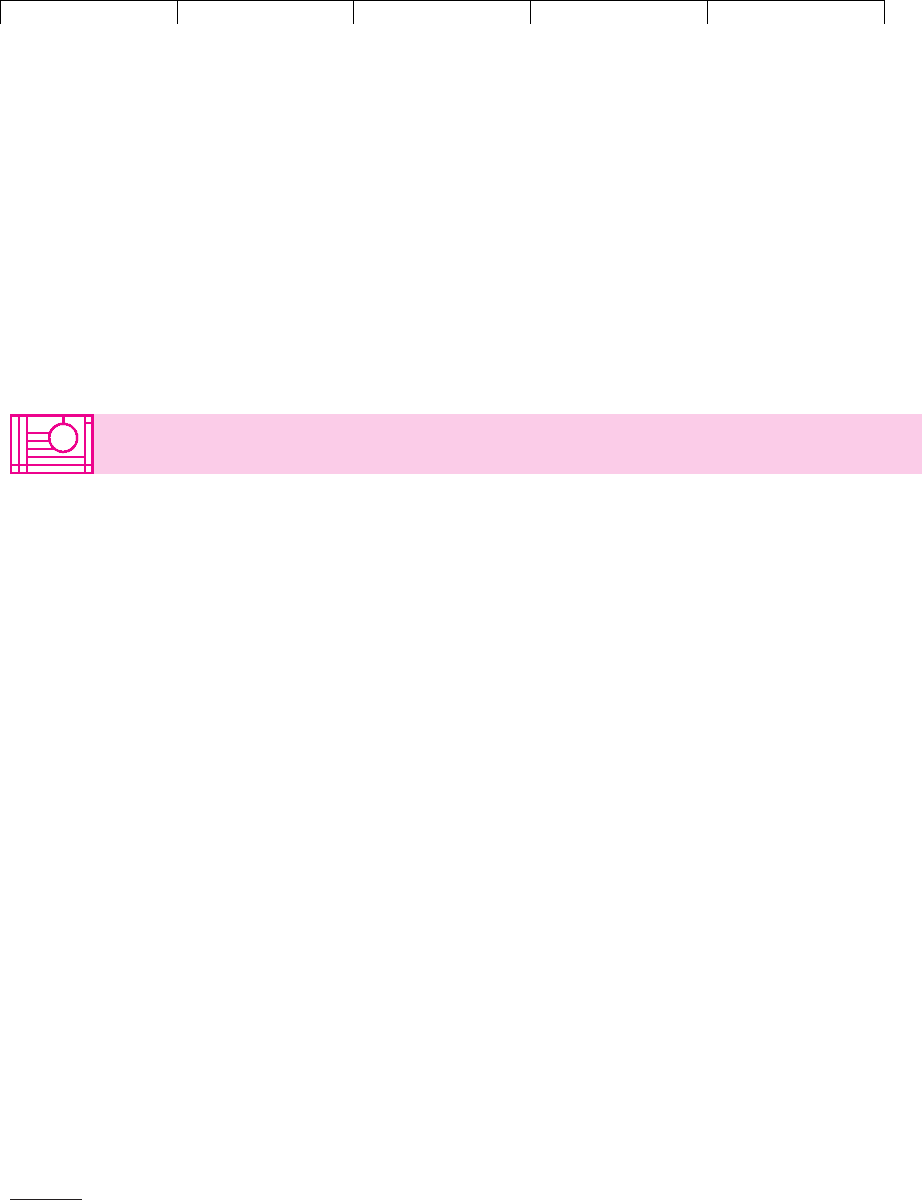
Brealey−Meyers:
Principles of Corporate
Finance, Seventh Edition
V. Dividend Policy and
Capital Structure
16. The Dividend
Controversy
© The McGraw−Hill
Companies, 2003
dend. Second, when valuing the entire equity you need to include both the cash
that is paid out as dividends and the cash that is used to repurchase stock. Third,
when calculating the cash flow per share, it is double counting to include both the
forecasted dividends per share and the cash received from repurchase (if you sell
back your share, you don’t get any subsequent dividends). Fourth, a firm that re-
purchases stock instead of paying dividends reduces the number of shares out-
standing but produces an offsetting increase in earnings and dividends per share.
CHAPTER 16
The Dividend Controversy 447
16.5 THE RIGHTISTS
Much of traditional finance literature has advocated high payout ratios. Here, for
example, is a statement of the rightist position made by Graham and Dodd in 1951:
The considered and continuous verdict of the stock market is overwhelmingly in fa-
vor of liberal dividends as against niggardly ones. The common stock investor must
take this judgment into account in the valuation of stock for purchase. It is now be-
coming standard practice to evaluate common stock by applying one multiplier to
that portion of the earnings paid out in dividends and a much smaller multiplier to
the undistributed balance.
25
This belief in the importance of dividend policy is common in the business and in-
vestment communities. Stockholders and investment advisers continually pressure
corporate treasurers for increased dividends. When we had wage-price controls in the
United States in 1974, it was deemed necessary to have dividend controls as well. As
far as we know, no labor union objected that “dividend policy is irrelevant.” After all,
if wages are reduced, the employee is worse off. Dividends are the shareholders’
wages, and so if the payout ratio is reduced the shareholder is worse off. Therefore
fair play requires that wage controls be matched by dividend controls. Right?
Wrong! You should be able to see through that kind of argument by now. But
there are more serious arguments for a high-payout policy that rely either on mar-
ket imperfections or the effect of dividend policy on management incentives.
Market Imperfections
Those who favor large dividend payments point out that there is a natural clien-
tele for high-payout stocks. For example, some financial institutions are legally re-
stricted from holding stocks lacking established dividend records.
26
Trusts and en-
dowment funds may prefer high-dividend stocks because dividends are regarded
as spendable “income,” whereas capital gains are “additions to principal.” Some
observers have argued that, although individuals are free to spend capital, they
25
These authors later qualified this statement, recognizing the willingness of investors to pay high
price–earnings multiples for growth stocks. But otherwise they stuck to their position. We quoted their
1951 statement because of its historical importance. Compare B. Graham and D. L. Dodd, Security
Analysis: Principles and Techniques, 3rd ed., McGraw-Hill Book Company, New York, 1951, p. 432, with
B. Graham, D. L. Dodd, and S. Cottle, Security Analysis: Principles and Techniques, 4th ed., McGraw-Hill
Book Company, New York, 1962, p. 480.
26
Most colleges and universities are legally free to spend capital gains from their endowments, but
they usually restrict spending to a moderate percentage which can be covered by dividends and in-
terest receipts.
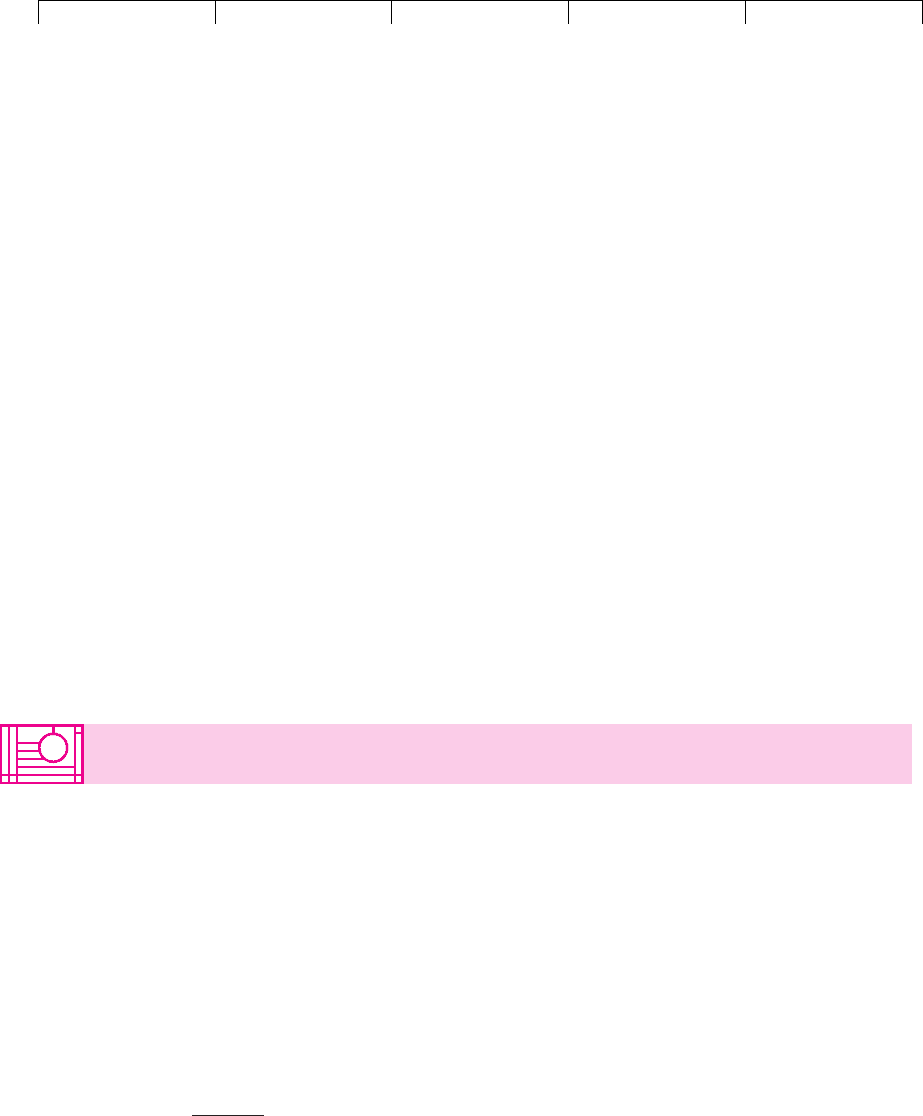
Brealey−Meyers:
Principles of Corporate
Finance, Seventh Edition
V. Dividend Policy and
Capital Structure
16. The Dividend
Controversy
© The McGraw−Hill
Companies, 2003
may welcome the self-discipline that comes from spending only dividend in-
come.
27
If so, they also may favor stocks that provide more spendable cash.
There is also a natural clientele of investors who look to their stock portfolios for
a steady source of cash to live on. In principle this cash could be easily generated
from stocks paying no dividends at all; the investor could just sell off a small frac-
tion of his or her holdings from time to time. But it is simpler and cheaper for IBM
to send a quarterly check than for its stockholders to sell, say, one share every three
months. IBM’s regular dividends relieve many of its shareholders of transaction
costs and considerable inconvenience.
28
Dividends, Investment Policy, and Management Incentives
If it is true that nobody gains or loses from shifts in dividend policy, why do share-
holders often clamor for higher dividends? There is one good reason that applies
particularly to mature companies with plenty of free cash flow but few profitable
investment opportunities. Shareholders of such companies don’t always trust
managers to spend retained earnings wisely and they fear that the money will be
plowed back into building a larger empire rather than a more profitable one. In
such cases investors may clamor for generous dividends not because dividends are
valuable in themselves, but because they signal a more careful, value-oriented in-
vestment policy.
29
448 PART V Dividend Policy and Capital Structure
27
See H. Shefrin and M. Statman, “Explaining Investor Preference for Cash Dividends,” Journal of Fi-
nancial Economics 13 (June 1984), pp. 253–282.
28
Those advocating generous dividends might go on to argue that a regular cash dividend relieves
stockholders of the risk of having to sell shares at “temporarily depressed” prices. Of course, the firm
will have to issue shares eventually to finance the dividend, but (the argument goes) the firm can pick
the right time to sell. If firms really try to do this and if they are successful—two big ifs—then stock-
holders of high-payout firms might indeed get something for nothing.
29
La Porta et al. argue that in countries such as the United States minority shareholders are able to pres-
sure companies to disgorge cash and this prevents managers from using too high a proportion of earn-
ings to benefit themselves. By contrast, companies pay out a smaller proportion of earnings in those
countries where the law is more relaxed about overinvestment and empire building. See R. La Porta, F.
Lopez-de-Silanes, A. Shleifer, and R. W. Vishny, “Agency Problems and Dividend Policies around the
World,” Journal of Finance 55 (February 2000), pp. 1–34.
16.6 TAXES AND THE RADICAL LEFT
The left-wing dividend creed is simple: Whenever dividends are taxed more heav-
ily than capital gains, firms should pay the lowest cash dividend they can get away
with. Available cash should be retained or used to repurchase shares.
By shifting their distribution policies in this way, corporations can transmute
dividends into capital gains. If this financial alchemy results in lower taxes, it
should be welcomed by any taxpaying investor. That is the basic point made by the
leftist party when it argues for low-dividend payout.
If dividends are taxed more heavily than capital gains, investors should pay
more for stocks with low dividend yields. In other words, they should accept a
lower pretax rate of return from securities offering returns in the form of capital
gains rather than dividends. Table 16.1 illustrates this. The stocks of firms A and B
are equally risky. Investors expect A to be worth $112.50 per share next year. The
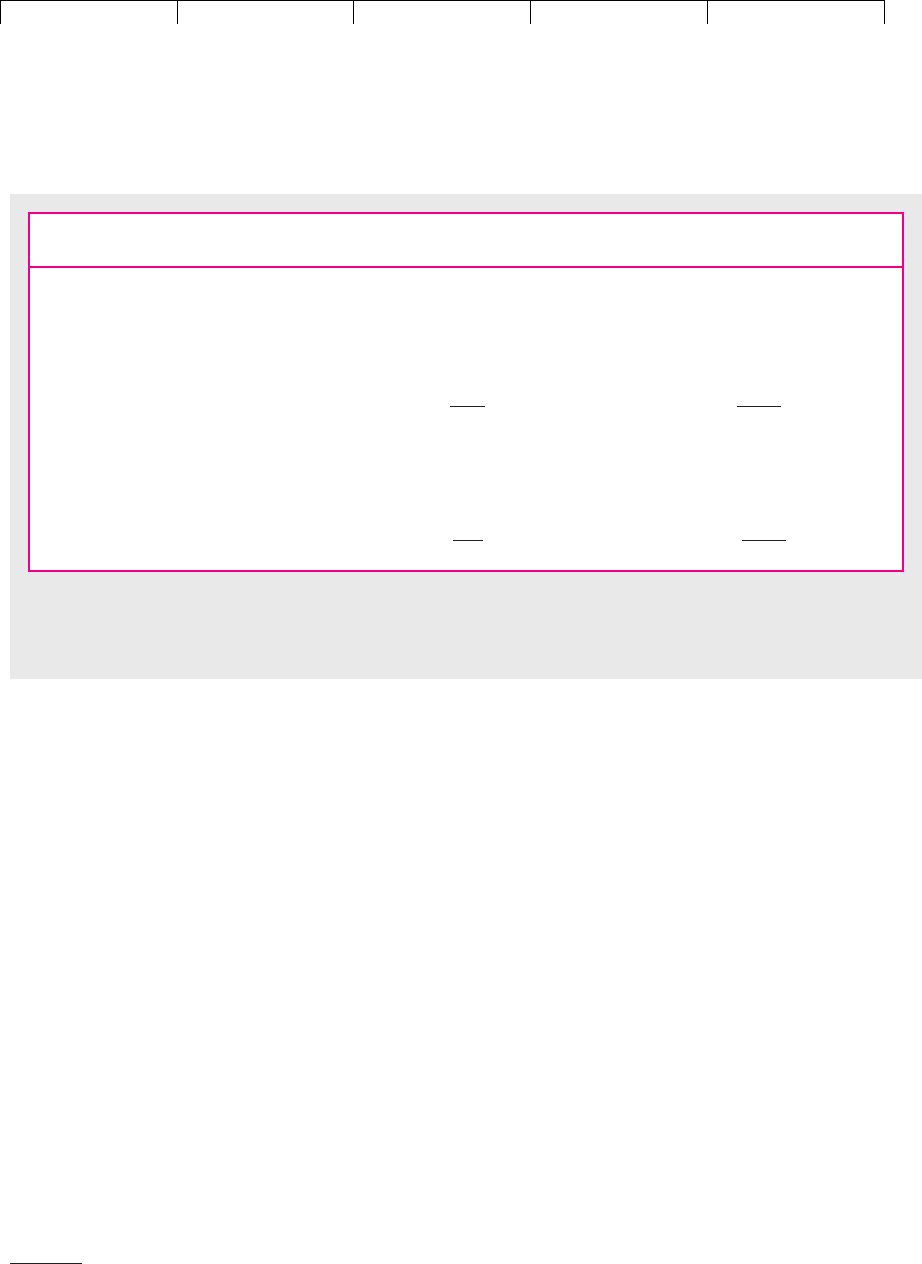
Brealey−Meyers:
Principles of Corporate
Finance, Seventh Edition
V. Dividend Policy and
Capital Structure
16. The Dividend
Controversy
© The McGraw−Hill
Companies, 2003
share price of B is expected to be only $102.50, but a $10 dividend is also forecasted,
and so the total pretax payoff is the same, $112.50.
Yet we find B’s stock selling for less than A’s and therefore offering a higher pre-
tax rate of return. The reason is obvious: Investors prefer A because its return
comes in the form of capital gains. Table 16.1 shows that A and B are equally at-
tractive to investors who pay a 40 percent tax on dividends and a 20 percent tax on
capital gains. Each offers a 10 percent return after all taxes. The difference between
the stock prices of A and B is exactly the present value of the extra taxes the in-
vestors face if they buy B.
30
The management of B could save these extra taxes by eliminating the $10 divi-
dend and using the released funds to repurchase stock instead. Its stock price
should rise to $100 as soon as the new policy is announced.
Why Pay Any Dividends at All?
It is true that when companies make very large one-off distributions of cash to
shareholders, they generally choose to do so by share repurchase than by a large
temporary hike in dividends. But if dividends attract more tax than capital gains,
why should any firm ever pay a cash dividend? If cash is to be distributed to stock-
holders, isn’t share repurchase always the best channel for doing so? The leftist po-
sition seems to call not just for low payouts but for zero payouts whenever capital
gains have a tax advantage.
CHAPTER 16
The Dividend Controversy 449
Firm A Firm B
(No Dividend) (High Dividend)
Next year’s price $112.50 $102.50
Dividend $0 $10.00
Total pretax payoff $112.50 $112.50
Today’s stock price $100 $97.78
Capital gain $12.50 $4.72
Before-tax rate of return
Tax on dividend at 40% $0 .40 ⫻ 10 ⫽ $4.00
Tax on capital gains at 20% .20 ⫻ 12.50 ⫽ $2.50 .20 ⫻ 4.72 ⫽ $.94
Total after-tax income (dividends (0 ⫹ 12.50) ⫺ 2.50 ⫽ $10.00 (10.00 ⫹ 4.72) ⫺ (4.00 ⫹ .94)
plus capital gains less taxes) ⫽ $9.78
After-tax rate of return
100 ⫻ a
9.78
97.78
b⫽ 10.0%100 ⫻ a
10
100
b⫽ 10.0%
100 ⫻ a
14.72
97.78
b⫽ 15.05%100 ⫻ a
12.5
100
b⫽ 12.5%
TABLE 16.1
Effects of a shift on dividend policy when dividends are taxed more heavily than capital gains. The high-payout stock
(firm B) must sell at a lower price to provide the same after-tax return.
30
Michael Brennan has modeled what happens when you introduce taxes into an otherwise perfect mar-
ket. He found that the capital asset pricing model continues to hold, but on an after-tax basis. Thus, if A
and B have the same beta, they should offer the same after-tax rate of return. The spread between pre-
tax and post-tax returns is determined by a weighted average of investors’ tax rates. See M. J. Brennan,
“Taxes, Market Valuation and Corporate Financial Policy,” National Tax Journal 23 (December 1970),
pp. 417–427.

Brealey−Meyers:
Principles of Corporate
Finance, Seventh Edition
V. Dividend Policy and
Capital Structure
16. The Dividend
Controversy
© The McGraw−Hill
Companies, 2003
Few leftists would go quite that far. A firm that eliminates dividends and starts
repurchasing stock on a regular basis may find that the Internal Revenue Service
recognizes the repurchase program for what it really is and taxes the payments ac-
cordingly. That is why financial managers do not usually announce that they are
repurchasing shares to save stockholders taxes; they give some other reason.
31
The low-payout party has nevertheless maintained that the market rewards
firms that have low-payout policies. They have claimed that firms which paid div-
idends and as a result had to issue shares from time to time were making a serious
mistake. Any such firm was essentially financing its dividends by issuing stock; it
should have cut its dividends at least to the point at which stock issues were un-
necessary. This would not only have saved taxes for shareholders but it would also
have avoided the transaction costs of the stock issues.
32
Empirical Evidence on Dividends and Taxes
It is hard to deny that taxes are important to investors. You can see that in the bond
market. Interest on municipal bonds is not taxed, and so municipals sell at low pre-
tax yields. Interest on federal government bonds is taxed, and so these bonds sell
at higher pretax yields. It does not seem likely that investors in bonds just forget
about taxes when they enter the stock market. Thus, we would expect to find a his-
torical tendency for high-dividend stocks to sell at lower prices and therefore to of-
fer higher returns, just as in Table 16.1.
Unfortunately, there are difficulties in measuring this effect. For example, suppose
that stock A is priced at $100 and is expected to pay a $5 dividend. The expected yield
is, therefore, 5/100 ⫽ .05, or 5 percent. The company now announces bumper earn-
ings and a $10 dividend. Thus with the benefit of hindsight, A’s actual dividend yield
is 10/100 ⫽ .10, or 10 percent. If the unexpected increase in earnings causes a rise in
A’s stock price, we will observe that a high actual yield is accompanied by a high ac-
tual return. But that would not tell us anything about whether a high expected yield
was accompanied by a high expected return. In order to measure the effect of divi-
dend policy, we need to estimate the dividends that investors expected.
A second problem is that nobody is quite sure what is meant by high dividend
yield. For example, utility stocks have generally offered high yields. But did they have
a high yield all year, or only in months or on days that dividends were paid? Perhaps
for most of the year, they had zero yields and were perfect holdings for the highly
taxed individuals.
33
Of course, high-tax investors did not want to hold a stock on the
days dividends were paid, but they could sell their stock temporarily to a security
dealer. Dealers are taxed equally on dividends and capital gains and therefore should
not have demanded any extra return for holding stocks over the dividend period.
34
If
shareholders could pass stocks freely between each other at the time of the dividend
payment, we should not observe any tax effects at all.
450 PART V
Dividend Policy and Capital Structure
31
They might say, “Our stock is a good investment,” or, “We want to have the shares available to finance
acquisitions of other companies.” What do you think of these rationales?
32
These costs can be substantial. Refer back to Chapter 15, especially Figure 15.3.
33
Suppose there are 250 trading days in a year. Think of a stock paying quarterly dividends. We could say
that the stock offers a high dividend yield on 4 days but a zero dividend yield on the remaining 246 days.
34
The stock could also be sold to a corporation, which could “capture” the dividend and then resell the
shares. Corporations are natural buyers of dividends, because they pay tax only on 30 percent of divi-
dends received from other corporations. (We say more on the taxation of intercorporate dividends later
in this section.)
